

James Wong
2026 Nissan Ariya review
3 Days Ago

Contributor
It sounds odd to describe the Volkswagen Group’s most practical offshoot, Skoda, as an enthusiast brand. But since launching in 2007, the Czech company and its ‘Simply Clever’ ethos has earned a passionate following in Australia.
Sales are growing on the back of an expanded model range featuring not one, not two, but three SUVs, and the new Scala promises to give the Golf, Corolla, and Hyundai i30 headaches the dreary Rapid never could.
Michael Irmer has been at the helm of Skoda Australia since 2013, having started his Volkswagen Group career working during university holidays in the Zwickau factory recently converted to an electric-only production facility.
His first job at Volkswagen was in the customer service department dealing with complaints, before writing an engineering thesis on the sensor technology underpinning some of the driver assist systems common in today’s cars.
Having bounced around the Volkswagen Group in Australia, Mr Irmer took charge at Skoda Australia in 2013.
The Dresden-born executive sat down with CarExpert over Zoom to talk about what Skoda represents within the Volkswagen Group, how the brand’s big year of product launches is tracking, electric vehicles, and warranty.
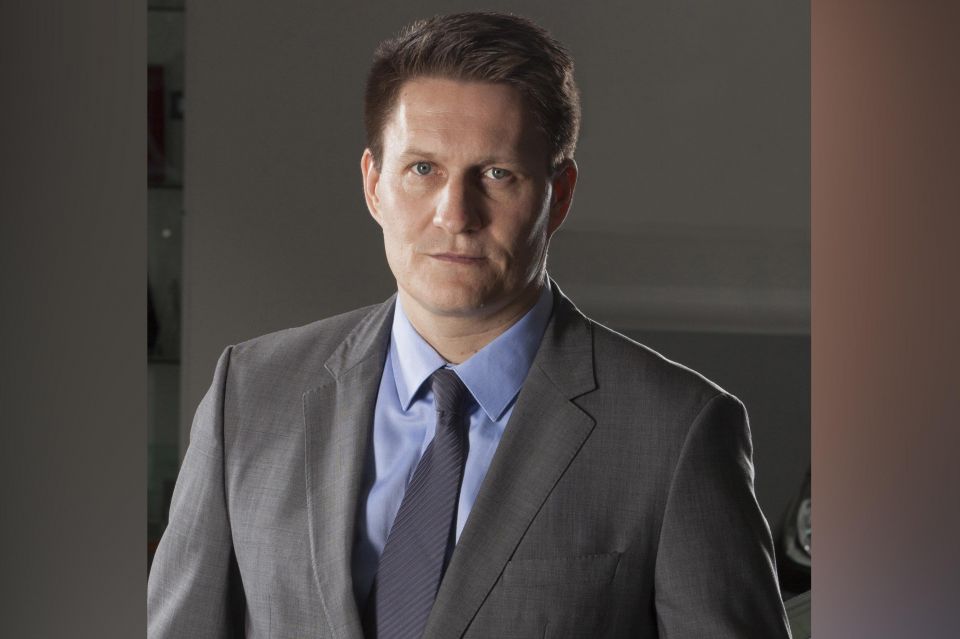
Michael Irmer: Let me start with Australia because you get this question more in Australia than you get it elsewhere, because we came much later to Australia than to the other markets.
As you know, 15 years sooner Skoda started to really get going everywhere in Western Europe, and we in Australia came a lot later.
So what we find is, what sets Skoda apart for an Australian consumer is, it gives you two things. It gives you all the sophistication, the goodies, the technology, and the design of a European car – and it gives to you the almost Asian value proposition.
Value is not free. It’s important to make the differentiation here, and I’ll come back to this. So this is what I say in Australia, and Bernhard Maier [Skoda boss] called out what Skoda stands for, and he didn’t use the work cheap, he didn’t use the word ‘the least expensive’.
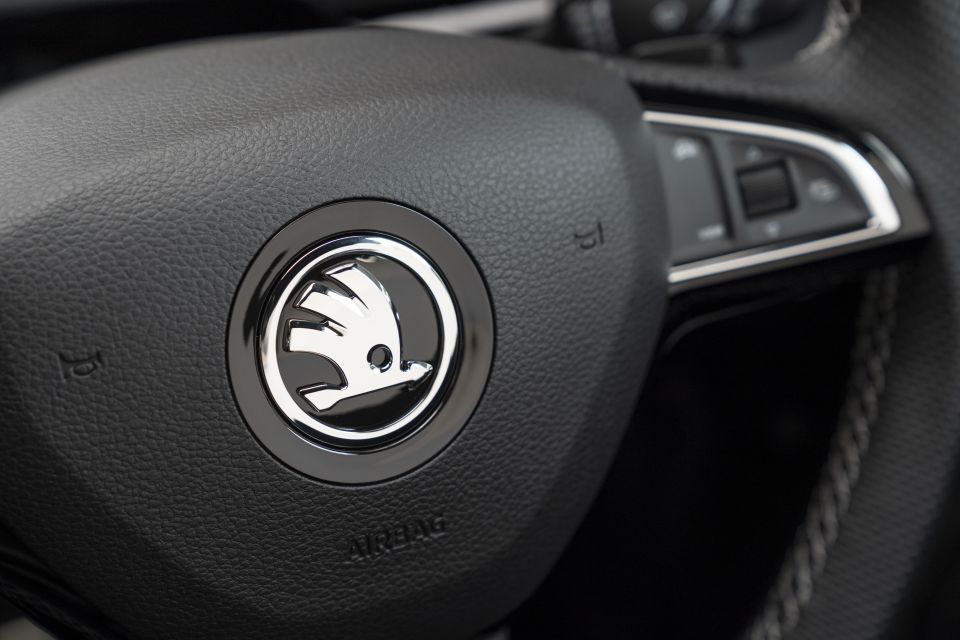
What he said is ‘you get more car your money’. And I think that is also very true for us in Australia, that best describes this value proposition.
So we’re not really seeing a lot of demand on the lower end of the budget buyers, where it’s basically a basic means of transport… and you don’t quite care how you how you go there; bus, train, four wheels – doesn’t really matter.
What we see is our buyers, they go quite naturally go further up in the hierarchy, but that doesn’t mean they don’t seek value. And if you do make the comparisons – I’m sure you do – I think it always becomes very clear that value is intrinsic in everything we do.
That is not only the upfront purchase of the car, it is also the whole ownership experience.
What we have done is, maybe just one secondary element behind what we see the Skoda brand can offer an Australian consumer is all the sophistication of a European car with design, technology, styling, and an affordable ownership experience.
That is not just the purchase price, it comes right to the entire ownership cycles that we have in the last five, six years put a lot of effort around. How can we make this a very, very affordable purchase proposition and we started with capped-price service in six years ago.
We did a big benchmark against all the Asian brands, because everyone thinks the Asian brands are very cheap to service. That’s perception.
Perception is not always reality, and we did a lot of work in that space and we could actually tell that we are significantly less expensive than some of the mainstream, I call them aspirational, Japanese brands, and we were about head-to-head with the two Koreans.
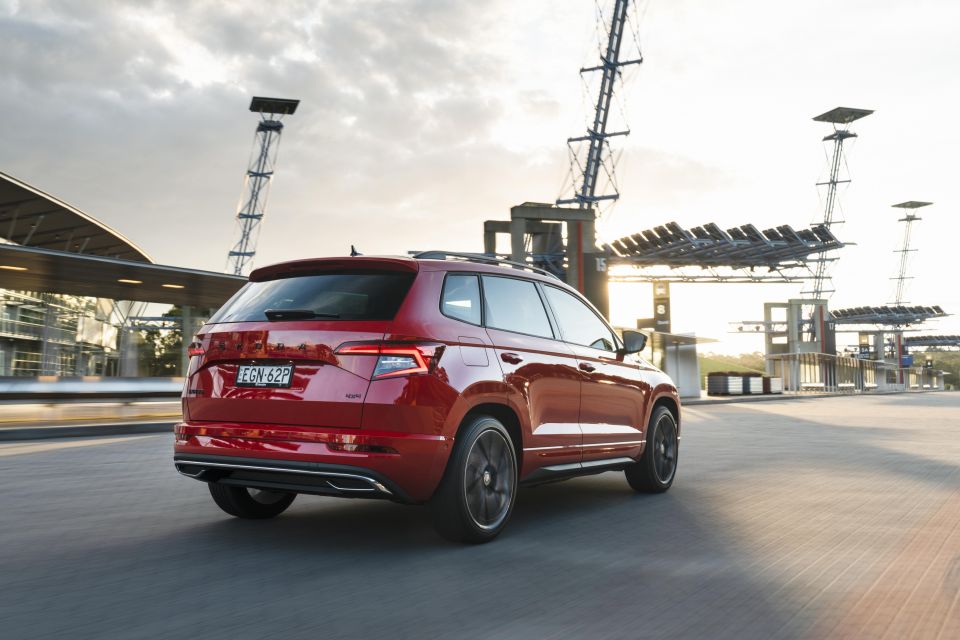
And there’s one Japanese brand, which is also very big, which has a service program which is very inexpensive in the first couple of years, then it jumps dramatically. We looked at all those models, and we decided to come up with capped-price servicing which, first of all, is already a very, very good value for money proposition.
On top of that, we topped it with these prepaid service packs, whether this is three years, whether this is five years, or now the continuation for indefinite so you can renew it every time again, providing you an unbeatable service value.
I’d say that’s come a long way, and there’s only one more one more part to that equation of value, as opposed to upfront purchase price, which is about the affordability throughout the ownership.
And then the other one, the off-boarding experience which is the residual value, and we also put a lot of effort there. This was once a weak point five, six years ago, I don’t see it as a weak point anymore.
We’re doing a very intensive statistical review on the [residual values] versus all the competitors, versus our sister brands, and we had dramatic improvements in those. I do think that is the end of it. Fast forward another three, four, five years, I would say we can come out very, very strong.
For instance, when you go into Western Europe again – they started a couple of years earlier – the residual values are by far the strongest in the marketplace. I’ve seen ads from Ireland, for instance, where they advertised and they called out the competitors, and it was remarkable how far they were ahead on diversity of values.
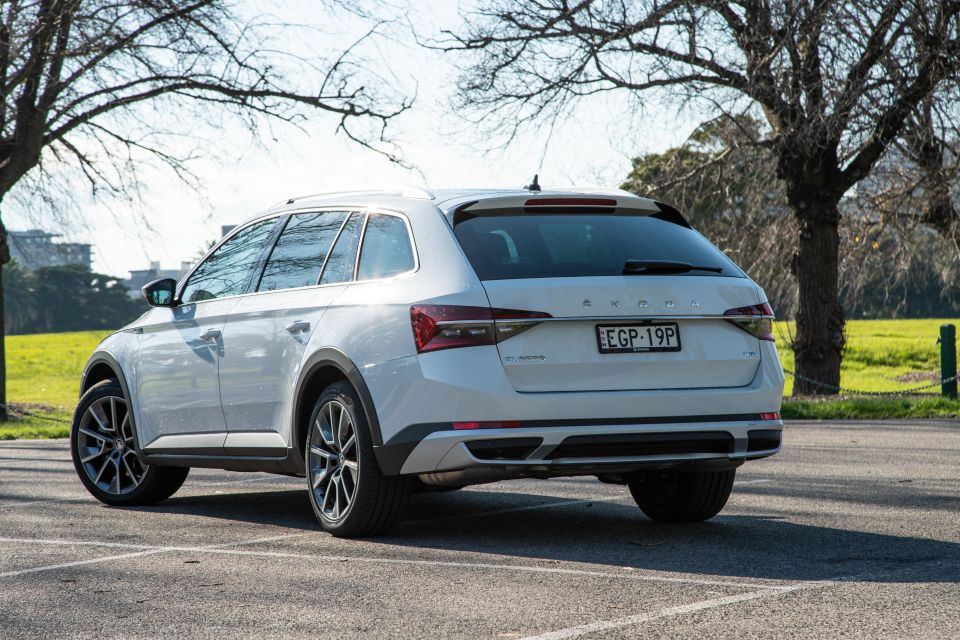
We’re not quite at this point yet, but it’s no longer a disadvantage, I would say. Some segments offer more from residual value declines.
All we want to give the Australian consumers is the ability to own a European car without the ownership price to it. I think it’s actually other brands give very good ownership to the consumers for sure, but it comes with a quite a decent price tag as well. And here we can be here we can offer a true alternative to it.
MI: I think what we can see and what we can feel is that we’re getting more and more accepted by a wider percentage of the population.
We see that in our buyer demographic, we have still these… intellectual people, above average income, very well travelled. And that is a part of the reason why they came to Skoda at first as an early adopter, earlier than others.
But we can see we’re opening up to more mainstream buyers than we have had three, four, five years ago. This also has to do with the increased offering on the SUVs, with Kamiq in market – which will be hitting Australian dealers in September, late September – we will have three SUVs in market, basically one size for everybody.
That of course is where the bulk of the private buyers go right now. I would almost say two thirds of the private buyers are opting for an SUV at the moment. But we have not given up our passenger car range. We have held our strengths there, and our volumes are stable.
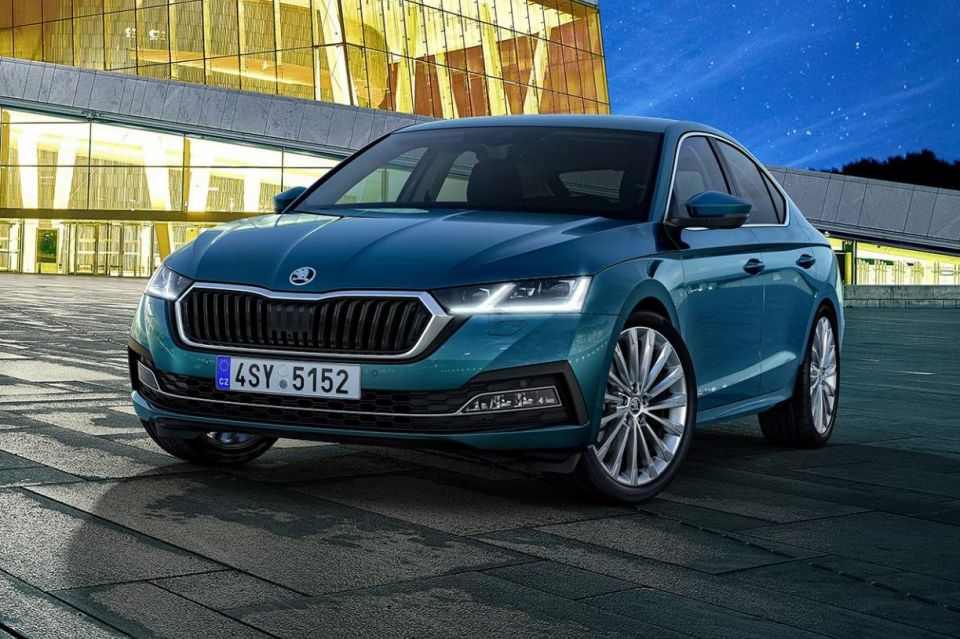
In some models we have a bit of supply situation, Fabia for instance, and we had in past in some other models even as well. Superb we also have at the moment a supply situation, but we have brought Scout for that reason, to help with this.
Of course this this is always temporary and that will improve. Overall, it’s about sustainable growth. I think there’s been many brands in Australia who basically grow quickly and then disappear quickly. We do not intend to be one of those.
We want to put sustainability before rapid growth in the marketplace, because I think it’s also a very big consumer disappointment if you go through such a phase of decline, and we would like to avoid that.
MI: Yes, I think we also call out that was when Alain Favey was here, a board member for sales and marketing. But two years ago, two and a half years ago, now.
We called out that we’re planning to go over 10,000 units, even a bit more. We’re still on track for that.
Don’t forget this year the market has contracted by about 20 per cent, we expect for the full year. That’s our expectation at the moment.
We’ll come somewhere in the vicinity [of results from] last year. Last year was already a decline, over the two years before 2017 [Australia] had the highest passenger and SUV market [decline] – passenger/SUV combined is what we measure, we exclude light commercials insurance because we do not have product offering.
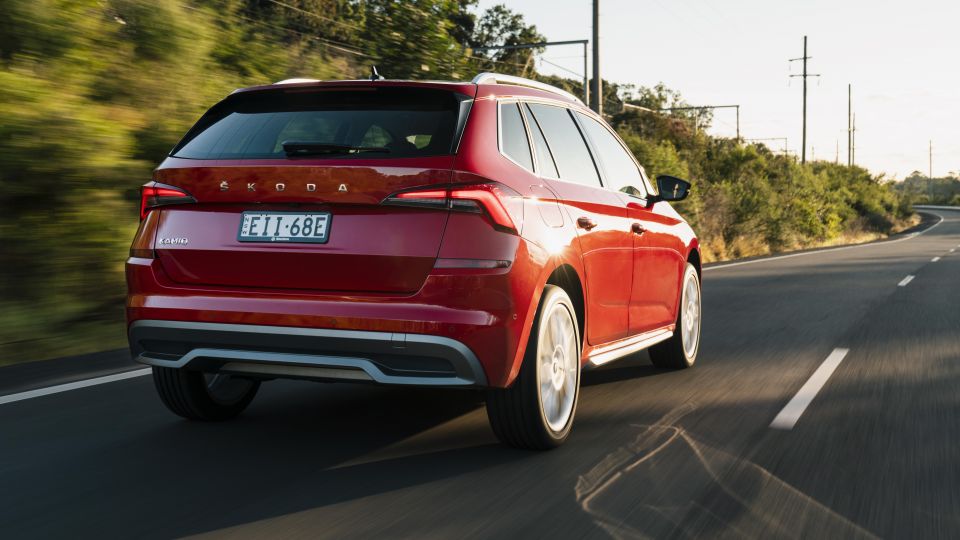
[The market] came basically from 917,000 in 2017, gradually declined to 800,000. That’s almost 15 per cent down already, and now [the market] lost up 20 per cent in that in that space. But our share is rising. That’s very good.
So when you look at this year’s figures, there were a couple of special effects in that, it all had to do with Corona. We had an extremely strong start until February, then you have the Corona situation, but the figures actually don’t give it a true reflection of what we have.
We have had things for instance, we had support programs which enabled the dealers to de-stock under demonstrator levels, which of course goes against the statistics.
We had also entered rental deals which couldn’t be executed which we are ready to go, and that is simply because the tourism industry is down right now. That will also come back, they will replenish their fleet when the time comes.
And a couple of other effects, but what you can see now we are at a point in July and a [few] pretty clean months now which is pretty free of course any COVID distortions – we will come back to Melbourne in a second – but the July market share was an all-time record in the passenger/SUV space.
That was an all-time record. That is exactly telling us that we’re on the right path, we have full confidence we’re going to see this 10,000 or a bit more in the next two, three years with the markets coming back to some normality – 800,000 or 900,000 [sales]. I would call that some normality.
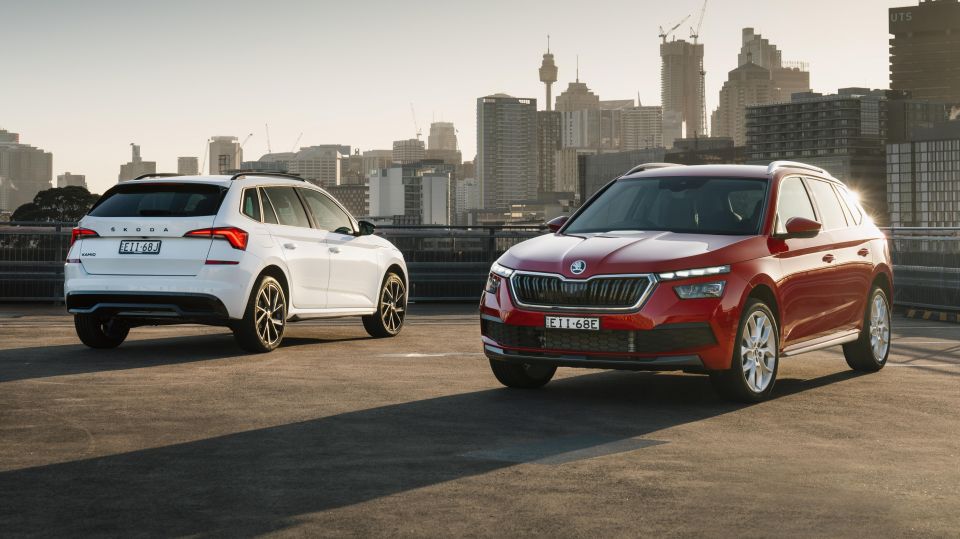
Then we’re going to see the figures, but of course if the market is only 650,000 then your numbers will naturally be affected when it comes to this year. We are planning to end up roughly around the same figures as last year, which means in the market which is declining we have increased our share again.
When you look at the year-to-date figures on VFACTS you would see that it’s not entirely visible yet.
But we have seen the delays as you know, you heard about that. We came a bit later to market than we had anticipated, but we still have not ever used the volume of those vehicles, we’re still trying to get the same.
We have had transport delays but we have cars coming in September. So I think it is totally realistic that we come around about the same level as last year, give or take a bit. It was an all-time record, and that’s not a bad effort if you can achieve that in a Corona year.
MI: So I think it is extremely difficult for those entrepreneurs. Remember they’re also businesses, family owned, lots of staff is employed there, and they have to be able to sell and service vehicles.
So what we have, of course we have to in the interests of safety and also in compliance with the Victorian state government rulings, we have to we have to obey the rules, which we are together with the dealer bodies.
And we have worked with our dealer body to enable them in those very challenging circumstances still to have a certain base level of business going. Of course, it is not the same and you can’t receive customers in the showroom.
What we have done is we put out a special offer which we have co-funded with our dealer bodies; we have chipped in from the from the factory side as well as dealers have also helped with this. And we try to make it a really irresistible offer which is over and above initial offers as promoted on the website.
Whether this is the no worries bundle, or whether this is the drive-away pricing on a non-negotiation basis for quarter three.
On top of that only for Victoria and only during that phase of lockdown, if a customer is willing to commit to a purchase and take delivery whenever it’s safe to do so, then the customers will see a seven-year factory warranty and a three-year service pack.
Important to notice is that the seven-year factory warranty is the same inclusion of warranty cover in the first year as in the seventh year. You’ll hear some other manufacturers calling out they have the best warranty and you’re looking at Ts and Cs, you see big exclusions from year three onwards.
So our warranty offering in Victoria at the moment, we’ve done it a bit as a test.
We discussed it a bit with our retailers… we said ‘we can do either a free service pack or we can run a test with the seven-year warranty’, and the dealers were actually swaying towards the three-year service pack. They said ‘the consumer don’t seem to ask and bothered about five-year or seven-year warranty’.
But we have later on agreed with the dealer body that you do a combination as a test to see how the acceptance is in the market, and what I hear from the dealers, they love the offer the consumers love the offers, and we have much better than expected results out of it.
In the end, we all agreed let’s do it. Let’s go with the full package and then we can see what the response is.
MI: I do not want to speculate about this. We have to see the results first.
I think what we can always do, we can offer it as a promotional add-on or a purchase option, and then the consumer can decide whether it is important to them a lot.
That’s also how we went with the five-year warranty. We had it on offer for a couple of years so that we could see how much do customers value or not value the product.
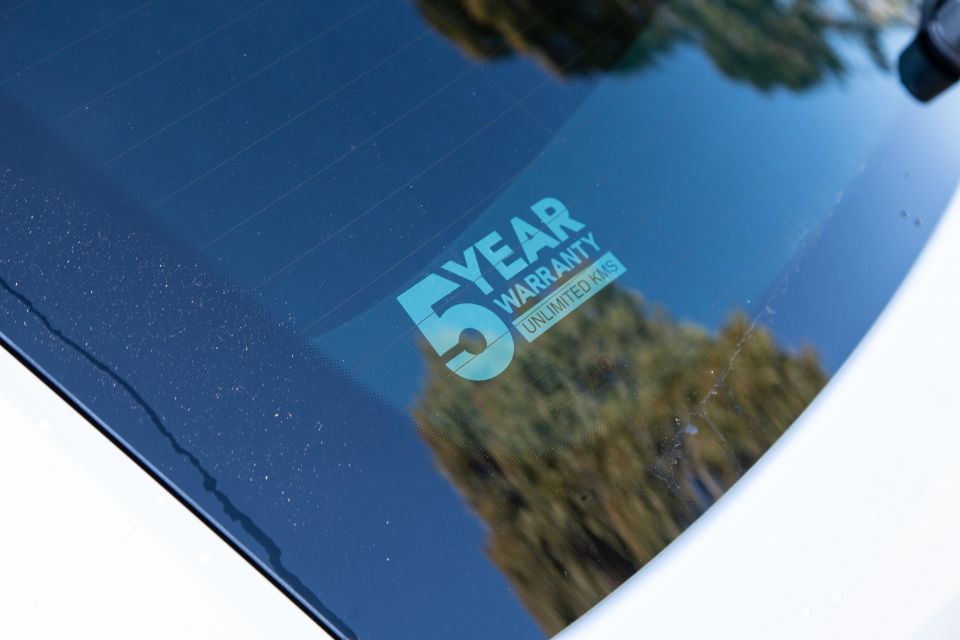
I would say not every customer is in tune with our dealers feedback, and they see our customers every day, hundreds of them – so they have a representative sample size, rather than asking three, four people.
There are people who generally do not care, because they will sell the car when it’s three, four, or five years old, and that means it’s for them not so important. And there are other people which do care because they tend to hold the cars for longer. Hence why we have to test it.
So I think it’s an open-ended discussion. We have to see what it will lead us to.
MI: I’m not quite happy with the delays, as you can imagine. The delays were would have been totally avoidable when we hadn’t had COVID.
So what what we normally do is fly in a car or a batch of cars before we launch a vehicle, just to really get to experience the product and everything. And we actually had planned that for this instance, and the flight was cancelled on the day the car was going to the airport in Munich.
It was on an Emirates flight, and that was the day when Emirates decided to ground their fleet. We couldn’t get the car here. In a normal year we would have not felt any of that, it would have just gone according to plan, everything goes like clockwork.
This year because of COVID we had a bit more difficulties, but I am I’m really pleased to see how we’ve been able to tackle around it.
We have a consumer offer as well for all Australia customers, for the Scalas. We have started to deliver to dealers the first vehicles, and then we started selling, and then we couldn’t continue on because we thought it is not a good consumer experience to drive out of the showroom and to get a warning from time-to-time.
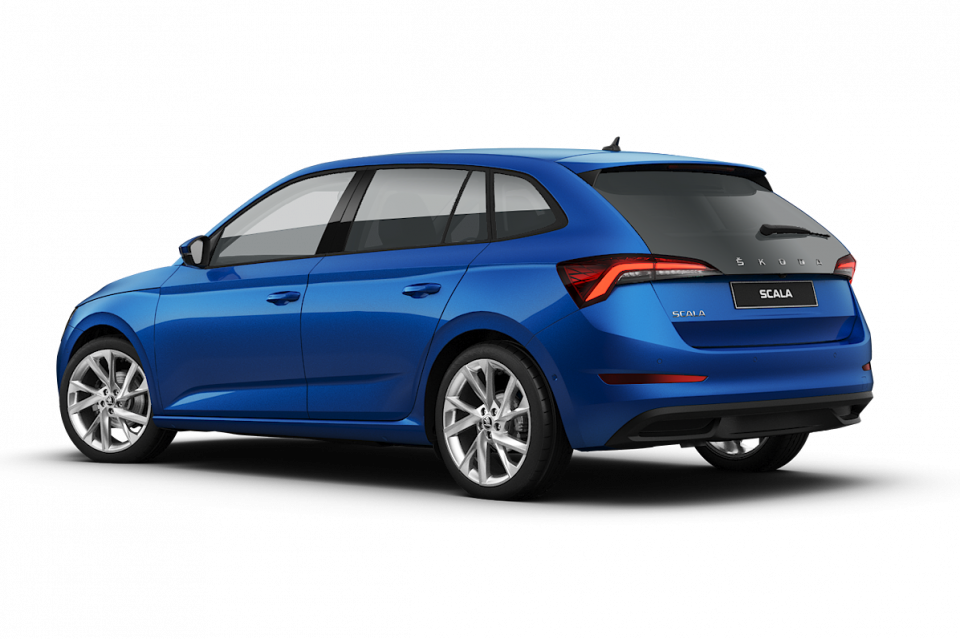
It’s only intermittent – and some people say ‘I couldn’t care less, I was looking for a feature to permanently disable the start/stop’ – but jokes aside I think it is not a good experience, so we decided to hold back the vehicles and start delivery once the software patch is available.
It is currently in development in the factory, and will become available.
What we have to offer those customers if they hold on to their order, or there are some new customers really wanting to sign up for the for the Scala in the meantime, they can get a free three-year servicing as well.
It’s not being communicated widely, it’s a bit of a workaround system to keep customers kind of happy and give something back to them – they are willing to wait, and not everybody can wait.
Let’s face it, some people have to replace their vehicles, and they will walk away and will go out with another choice.
Overall, I think we’re happy. But we are very happy with is the feedback we have received from the dealers on the Scala and the value proposition and also for the Kamiq.
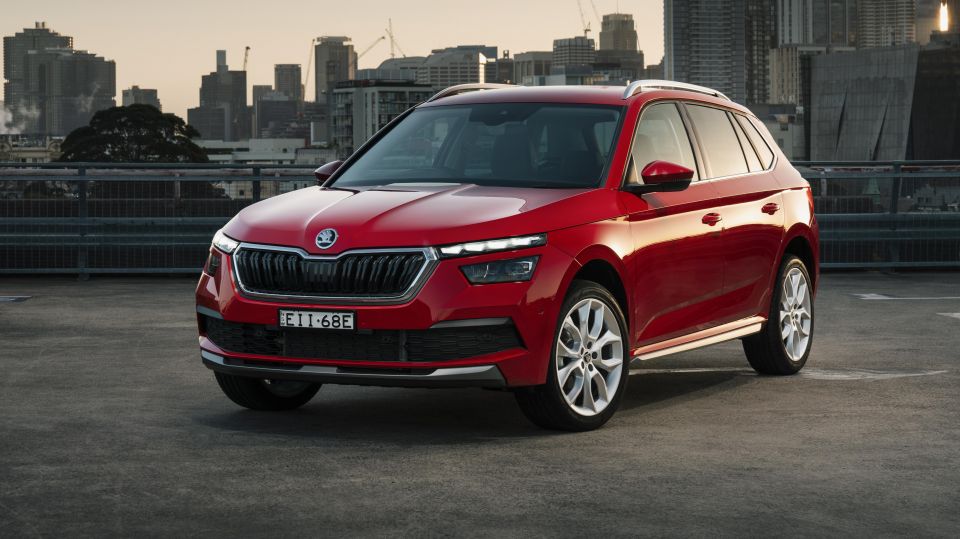
The dealers were, I would almost say, ecstatic about the Kamiq release last week, they snapped up hundreds of cars we had offered them and even wanted more – and I mean significantly more – cars.
That is a good sign, because our retailer partners they do know the market, they do know the consumer. And we although we do all the stats and do comparisons, we have a very good handle on where the value is in the marketplace, but it is just doubling that up from the other side.
So we are we are super confident about the new product. With the delays we’re not happy.
MI: It’s a bit up and down in all fairness.
I’ve seen many manufacturers have this situation as the factories had been shut down, and then the transport pipe for us is very long. The transport time itself takes about 70 to 80 days when the car is finished, but then it goes through the production line, and then it has a frozen period before.
The reality is from planning to receiving it is almost a six-month change cycle. To correct that is a bit like a big oil tanker, it takes a long time to steer it around. What we have seen is that we have been very well supplied in the first part of the year.
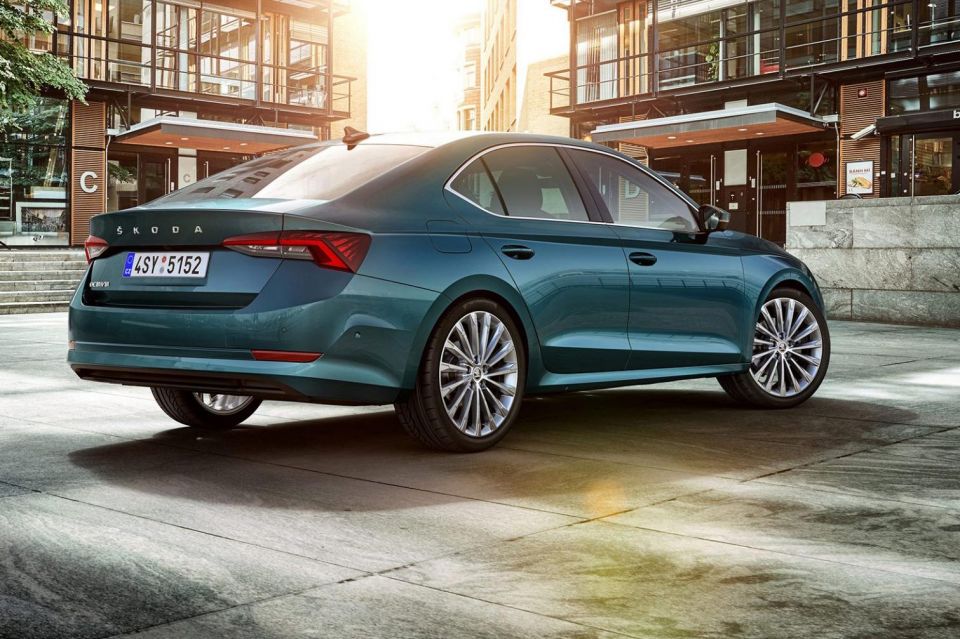
At the moment we have seen stock drying up in most model lines. The only exception where we have good stock is the Octavia, that has to do with the fact we stockpiled Octavia to last us until the new-generation will start in late first quarter or early second quarter [2021].
I think that’s possibly when the new generation will start, and we have stockpiled [the current car]. Because the production has now ended those cars are here, so they are free of those of those COVID distortions.
But the other models have seen because of the production shutdown an interruption in the supply. As I mentioned before, when we do the planning and we said we can come come out about the same as last year, we have the supply for that.
Paul Pottinger, Skoda head of communications: We’ve made it clear that the cars like the Scout, they’re not a great volume car in terms of sales. Are people going to be sufficiently invested in it, and Skoda customers particularly going to be invested in it sufficiently, into their cars and educated not to under-fuel it?
That’s a different issue with a mass-market car which costs substantially less. We’re talking about a $60,000 car here. Is it the same for a car which is under $30,000? If those people under-fuel, or mis-fuel, that will have consequences to a particulate filter.
That’s the great difficulty with it. Because they won’t withstand our 150ppm [sulphur] 91 RON. It’s less of a risk with a special like the Karoq 140 Sportline. We make that completely clear.
We’ve even gone out of our way in dealerships with stickers, with hangers, with educational things of that nature. In short, it’s acceptable for a special edition or a low-volume car, not so much for mass market.
MI: We might also see an improvement in the fuel quality in Australia. I think the fuel quality is not always as poor… and then you hear it with the fuel companies saying that the sulphur content is lower than the norms.
When it comes to the variants, and I speak here for Skoda again, is the current portfolio offered on a worldwide scale. Brands have to make decisions, what engines for what country they will prioritise, and that has to do with the WLTP testing procedures.
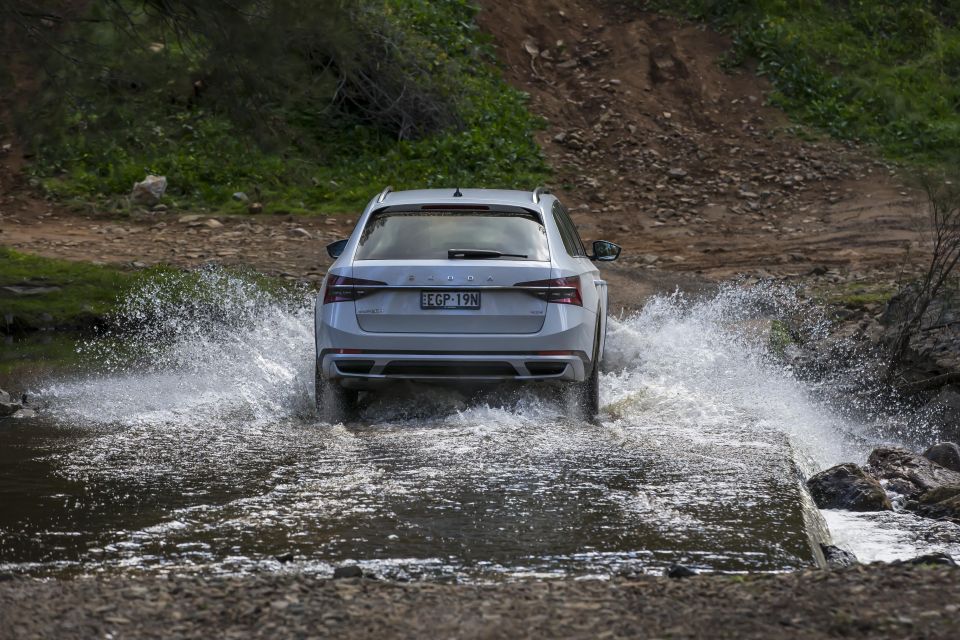
It’s not been written a lot here in Australia about, but the EU 6 introduction is actually introduction in multiple steps. So it came with real drive emissions like with this patch device, and then there was a temp factor, and that was a permanent factor.
Then they have new standards coming in, which is durability and service. So whether the car maintains low emissions over the lifespan of the vehicle, and also evaporation tests.
For instance, under high temperatures how much fuel does evaporate from the fuel system, but the car’s parked in the hot sun. So this is a number of variations to project environment. They all came in not in one, they came in naturally.
And the nature of the WLTP cycle requires every time numerous variants be re-tested through a very lengthy process.
In that process, simply with the number of permutations the factory had offered, and the number of markets the factory is selling cars into, it made it absolutely necessary for any manufacturer to prioritise what variants is coming first year, and that sometimes explains also the differences in the different groups offering different engines as well.

I would suggest that behind that too. At least I can say that in this particular Skoda situation.
PP: At least more broadly I can says that Australia’s at least 10 years behind Europe in a regulatory sense. We’re still not signatories to WLTP, we’re barely into Euro 5 [standards] they’re into Euro 6d I think. Cars which have even 0.1 more litres/100km will make a difference to your overall target.
So the cars with the very latest technology are going to be prioritised for the markets which have the requirements to meet.
MI: I have the feeling Australia is due for an upgrade… in terms of emissions, but this of course is not our control, in our hands. We have to operate in the system as it is.
MI: No. It’s about permutations, Scott. I think they make engines with and without. There are cases where there’s no engine without [a PPF] in the performance class we’re looking at available, then we might choose for certain engines – that is not for all engines, for certain engines – we can take the cars with a PPF, as we recently started doing.
What we would like of course, is that we can offer the very latest technology always without any modifications as it is in Europe. That would mean that the requirements need to be there in terms of regulating the fuel quality, but also regulating the market, because there’s a secondary element – obviously the competitive pressures you have.
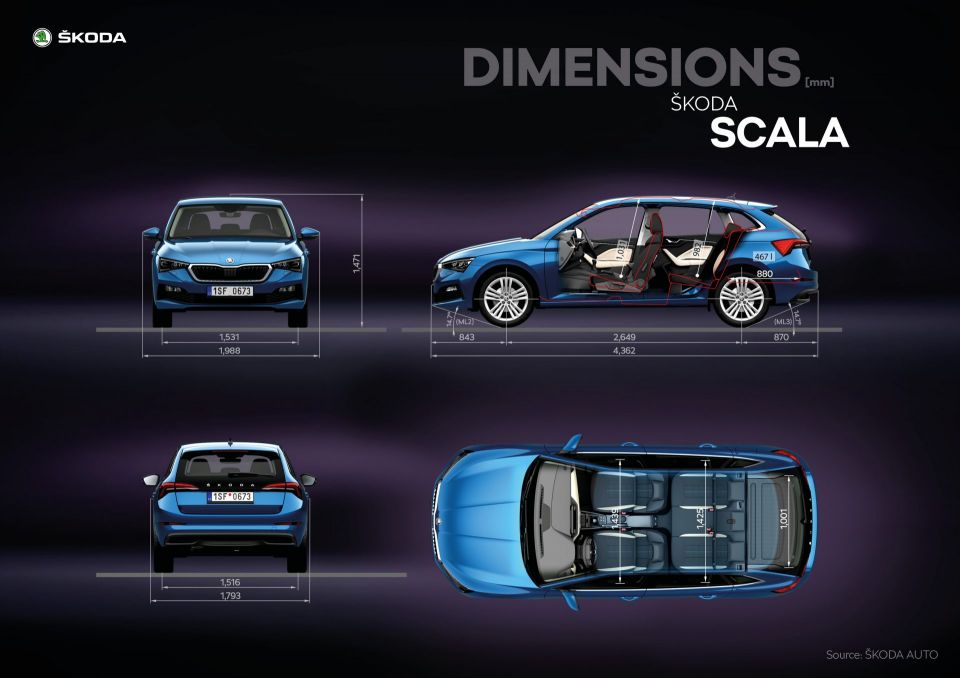
If other manufacturers offer cars which are designed for a second-world country, which is maybe equal or sufficient for the emission standard in Australia right now, there’s of course a cost benefit in making, and a competitive disadvantage. And that’s another element.
I think we’re trying to sort of protect consumers from any of those. So we’re just trying to offer the best technology, at the best possible value we can offer.
MI: I think we would probably quite easily exceed those standards by nature, but when they come to effect, we’re going to do some calculations and make sure that we comply with that standard. If you look at the CO2 figures we have in place, I think we are very good in comparison.
The whole group is very good, I think because they’re just sourcing so many engines from Europe.
I think it’s only fair that we say we need to be taken out of our future generations about our climate, how much CO2 we put in the atmosphere.
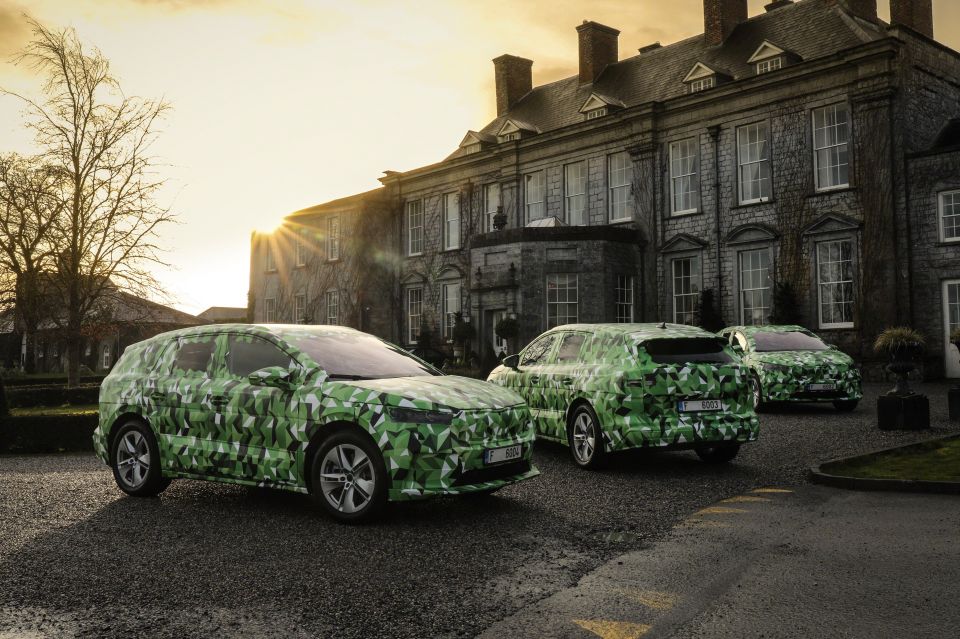
I’ve had this discussion before. Also, Australia is in my opinion very well suited for e-mobility unlike some people believe. Australia is so big but no-one has to decide to drive across the country. Everyone flies across the country, because it’s just so unbearable to drive so long at such slow speeds.
On the few roads where you do have to charge, a charge station can easily mitigate any of those issues. The reality is most people drive in city traffic, which is best suited for electric cars.
The reality is, most people live in houses which have driveways, which is best suited for home charging, which is charging mode for probably 90 per cent of our charge cases, if not more.
I personally think there’s a lot in it when you think what Australia can do in e-mobility. And at the moment, of course, China’s on the forefront, the US is on the forefront. Europe is on the forefront, and Australia is a bit left behind like a few other countries, maybe South America, Africa, South-East Asia, these countries probably which are not so progressive.
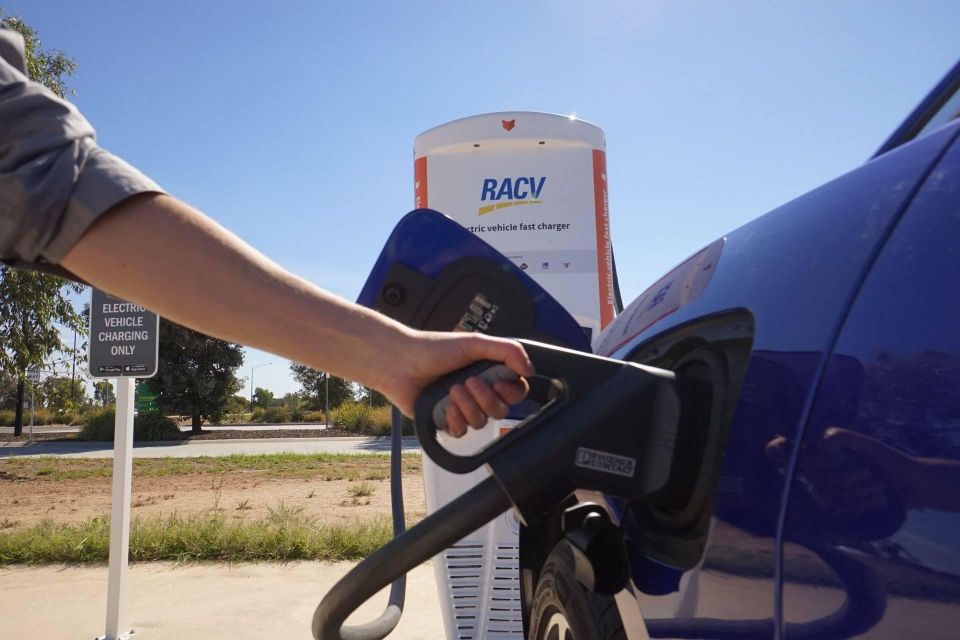
I’m pretty sure Australia will, at some stage, also flick the switch and come on board with the technology. It needs a little bit of government focus in that space, of course, that will help it along as it did in the other countries as well.
They’ve all got this as an enabler. Right now the latest stats in Germany for instance, is now they have 5 per cent of all cars sold already electric cars, over 5 per cent. That is an enormous dynamic versus last year despite COVID, the electric cars are soaring – and that will gain much, much more momentum in the next two, three years.
MI: The chances would be much greater if the government would make some good decisions about supporting the e-mobility era.
Right now the situation is a bit unclear in terms of the timing concerns. Of course, I have said this also before that we would be very eager to receive the electric cars, we discuss this with the factory every time.
At the moment we don’t have a definite go and the timing yet, but we have clearly the intent to do it.
There are a couple of things to resolve, and one of the one of the main issues is also that electric cars are required to meet in Europe the CO2 targets, and there are draconian penalties if you do not.
If you have a limited supply of electric cars, and in the initial ramp-up phase where the technology is – because it’s brand new – also more expensive to make, and the production capacity is limited, especially some manufacturing where they’re now starting with cell factories attached to car factories, at least in this initial phase, the conditions aren’t really great that we send cars with the electric engine to Australia.
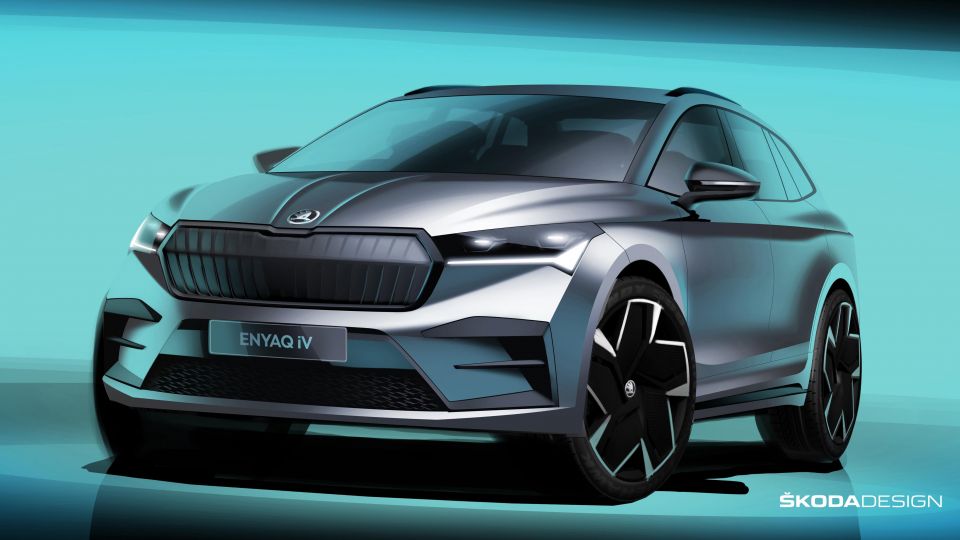
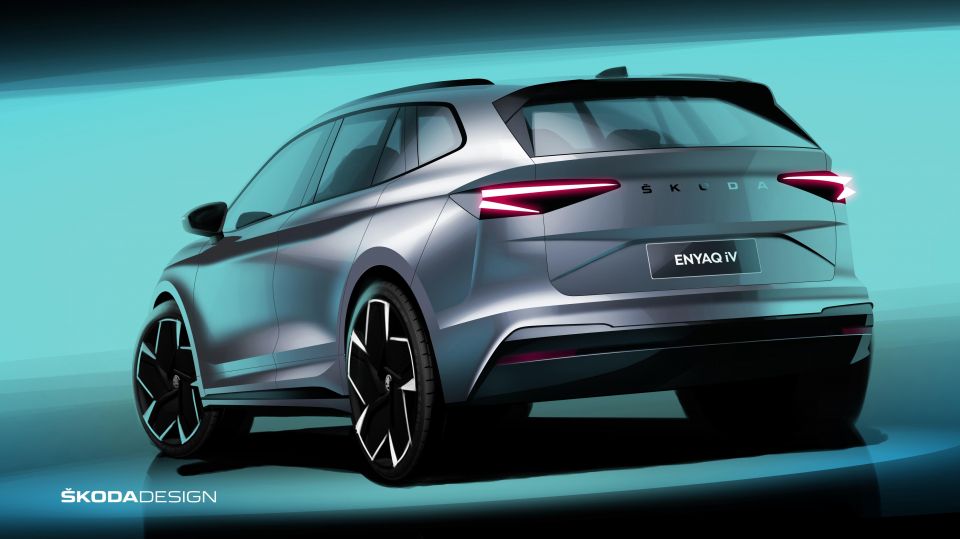
We don’t really require it. Hence why we might not be the first cab in the rank. But that can change quickly, so if the supply frees up on the other side, that can then eventually change.
As well, it can change when the government decides to put some more favourable ruling in place.
The Enyaq, you’ve seen the sketches. And you see that is a whole new era of design for the Skoda brand. It’s been constantly evolving.
Even with the last-generation Octavia came back in 2013, and it kept on evolving with the SUVs now further, and the Enyaq will demonstrate how that evolution continues on with the grille becoming a little bit more tilted up, and it’s really it’s got some ‘you want it feel’ to it when you see the vehicle.
The final pictures will be out early in September, for that car and then there’s a derivative coming as well after that.
MI: I don’t want to say low on the list of priorities, I would simply say it’s a pure necessity to satisfy the European CO2 regulation first and foremost. [The regulations] are firm, they are hard, there is no running away from them.
So this has to be satisfied, and when they’ve been satisfied then we will, then we will be getting out word heard as well. But that is basically non-negotiable right now, because we have to ensure them and Australia hasn’t made the step to something like this.
So hence, we do have that we would like to offer it up for just purely as a lighthouse. Plug-in hybrids or mild hybrids, which is now pretty much the standard, is for us a different situation here. We would volunteer to not bother with those in-between technologies, we want to make the leap from the ICE engines right to the fully electric cars.
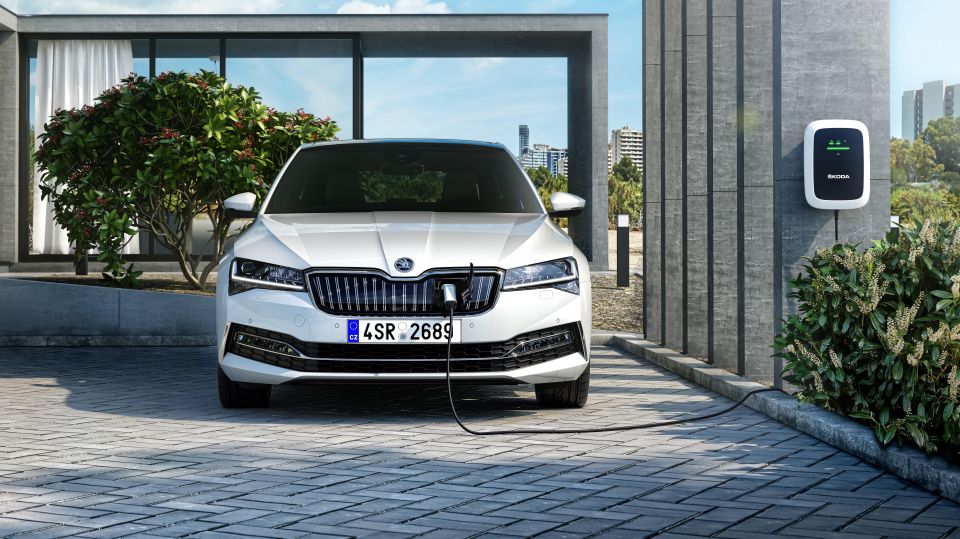
Simply because what we can see in the market, and who buys an electric vehicle, what buyer type is that, would start at the very top end with the most powerful engine, the highest equipment level, the biggest battery pack, and only selected dealers. That would not be a cheap car.
That would probably be the most expensive car in our line-up. Nevertheless, there would be buyers who find this appealing in that initial phase as an early adopter, and as time goes by, you can reach out further and further down to the lower price brackets as well.
That’s why we do not even consider to bring plug-in hybrids, even if they were available, we just would like to bring fully electric cars when thee time is right for it.
PP: Infrastructure is very important. We’re not asking for subsidies, we’re quite happy to be judged on the strength of our products. We’ve never asked for subsidies, we don’t believe in it.
MI: I think every country has done something slightly different, right. So many countries have had some form of subsidies or benefits, consumer benefits of course, but then you have also the CO2 regulation, which basically is an indirect force.
So you to achieve 95g/km for your fleet, and when your fleet includes high-performance internal-combustion engines cars there’s no way ever you can achieve that without the electric car. So you don’t even need to give incentives.
There’s many ways. I don’t want to attack the government, they should be making their own decisions. But definitely it can be promoted.
PP: We as an industry adopted voluntarily the CO2 standard our of necessity, to show that we were serious about it. It’s come from car brands.
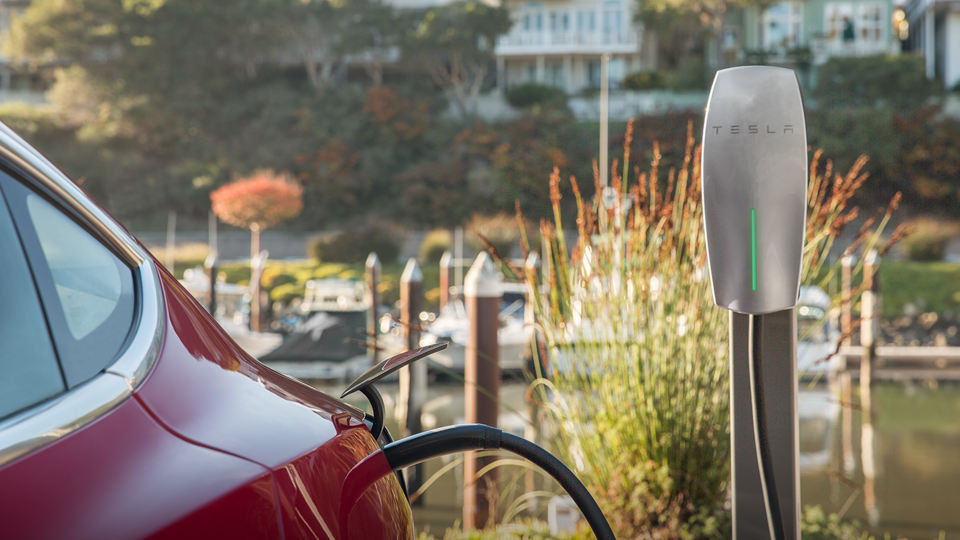
MI: It’s the only way to be to be sustainable. And when you think about energy generation in Australia, another reason for pushing e-mobility is… solar power has become so inexpensive now. It required initially some pushing to get it off the ground and now it’s off the ground.
Our solar power is so inexpensive. I read the other day in the Financial Review the vast majority of any new investment going into power generation is in solar, the vast majority and that is not by means of incentives. It’s by means of natural economic forces.
The car park of vehicles with batteries equipped to them can serve as a great buffer battery for the peaks and troughs in the supply of solar and wind power.
Of course it has peaks and troughs and doesn’t require necessarily bank batteries stuck somewhere in the desert. It can also be the cars themselves by means of swarm intelligence, they can be part of the intelligent grid.
MI: It’s the future. Just on a side note, the factory which I worked at before I came to Australia many years ago is now producing only electric cars.
Eventually there will be a mix of factories producing those depending what the customer demand is, some some factories will also be able to do both, so they can be flexible to react to demand changes and so on.
We will both say that, but I’m really proud of Volkswagen Group group being so proactive, and Skoda also being so proactive to really push this new technology forward, because it is the future.
MI: That is changing. It’s not always the same. So what we see right now with the Kodiaq RS is just overtaking the Superb Sportline as, I call it the most expensive but that’s probably not doing it justice, it’s the highest sticker price we have in the range, over $70,000.
But the acceptance is great, it is about 25 per cent of the mix. It swings between 20 and 30 per cent of the mix of our biggest-selling car, which is Kodiaq.
I would say the acceptance is there. We had this on a different level before. So go back three, four years in time. The biggest selling individual version of car we have had was the Octavia RS wagon with the two packs, which was just shy of $50,000 at the time.
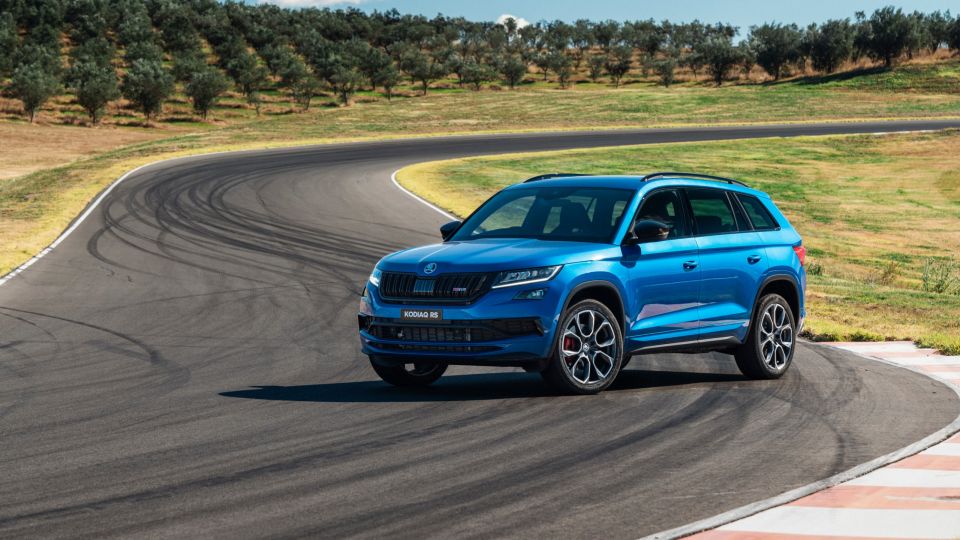
It was great value from what you got for that, right. So that was the sweet spot for us at the time, $50,000. But people don’t really think that, especially people who are not really close to the industry.
The Kodiaq, we offer it in a very high specification already as standard, the standard model is a very high specification level compared to some other countries.
You go to the UK and you’ll see how high the specification level is [in Australia], it’s enormous. It starts at $45,000 and reaches to $75,000 for the RS, which is everything money can buy on the car. That’s the only offering we’ve chosen for the RS model… you just don’t need to worry about what you could have forgotten what you should have opted for.
We understand buyers do not always acquire all the features but if they get them for a good price, they don’t mind having them on the cars. I think that’s that’s been our philosophy and that’s how we found we found an offering which resonates well with customers.
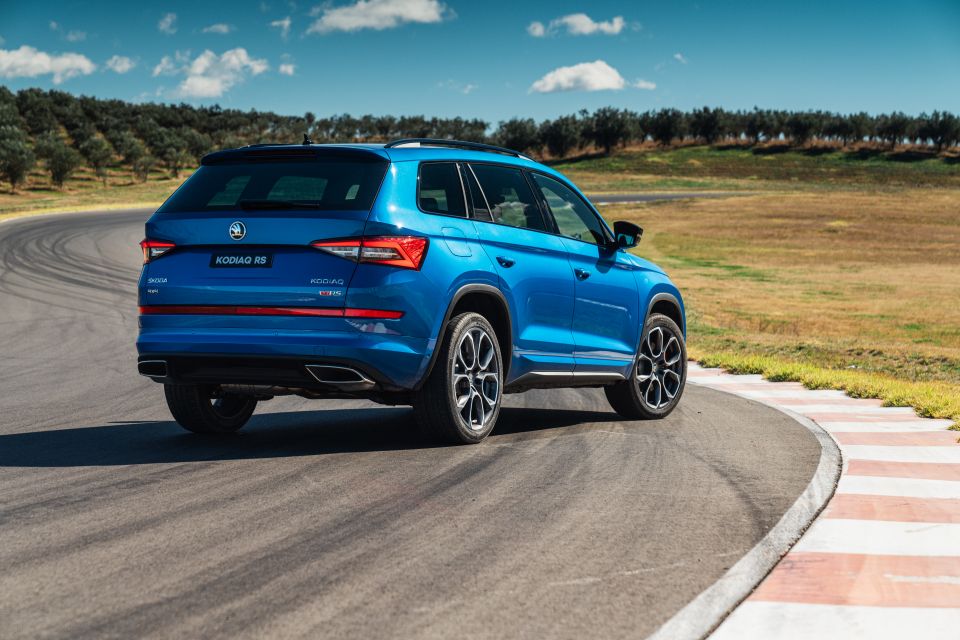
Not every customer in Australia, but I think with our customers for sure.
MI: It has been evolving, but I think we try to stay true to the fans we have, so to speak, and give them what they like to have. And then we can of course, expand on that but as I said, I don’t think it does the brain a great deal of service if you have a de-specced model which looks very bare just to achieve a low sticker price.
I think it just doesn’t do a good job for the brand perception, and that is still what we’re going to build in Australia.
We are not at the end of the journey yet. At best, we only halfway through and and we just have to continue it and stick to our plan.
MI: I’m not sure we’re ever finished, because it’s a bit hypothetical to say I can look 20 years in the future. I think that’s a bit far.
What I can say is, I can look into the next five years and I can clearly see that we can develop a brand which has similar acceptance as some other aspirational mainstream brands have achieved already, or even better than that.
And also volumes which can sustain that together to have a good network coverage, and that would be volumes in the in the mid-teens, give or take.
I think that is our next milestone. To jump, once we have achieved that next milestone we can go back, put the thinking hat on, and ask how can we advance this further? In the end the sky’s the limit.
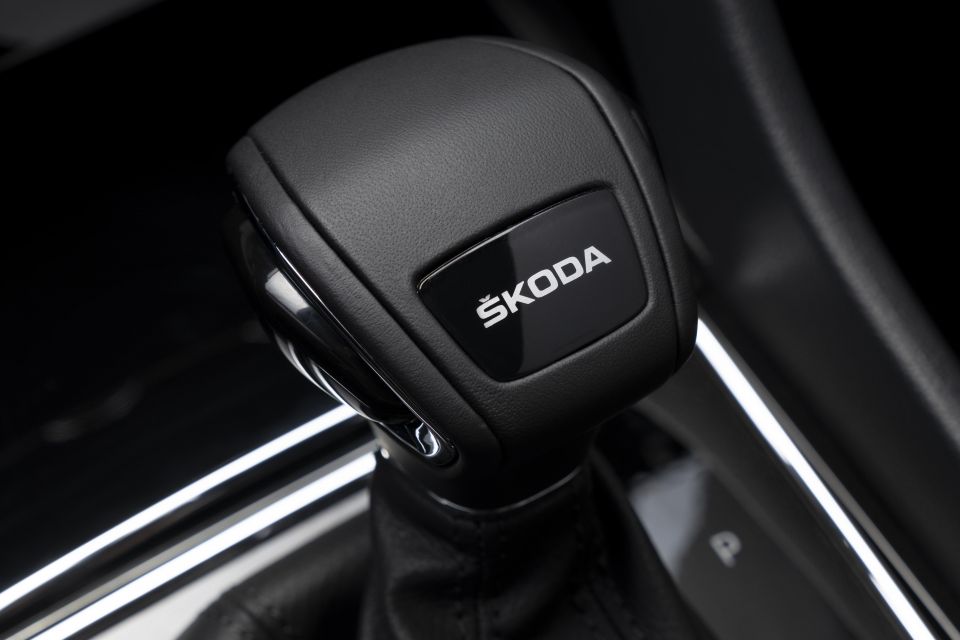
You just need to look at Europe. You can see in some countries, and I’m talking Western Europe – and I deliberately don’t call out Central Europe or even Eastern Europe. Western Europe is where Skoda sells the bulk of its vehicles, the vast majority of the supply gets to Western European countries.
Skoda wasn’t always there. In the ’90s it started its journey, in the early ’90s.
And then you go to all those countries and look at who’s number one on the sales chart in Switzerland, who’s number one in Austria, who is number one in Finland.
Look at those countries and we Google it… you would find you would find some interesting facts. So yes, the brand makes great inroads. But I wouldn’t speculate about what happens 10 or 20 years from now, I think I’ll leave that to the next generation in my chair.
MI: When I started my journey, the current position I’m in as the caretaker of the brand, we have basically this philosophy which we today spoke about quite a bit – we had started that a little bit already back in 2013.
It has evolved a little bit, but it hasn’t turned upside down. So it’s only really in facets where it’s evolved. So one of the things, I can give you an example, we thought we needed low sticker price entry models at the very beginning, and later on we learned we actually do not, and it doesn’t cost us volume but it helps with the aspiration of the brand.
That is most important for this phase of the brand. Mind you, going forward there is talk that Skoda should go maybe a little bit more aggressive on the value proposition.
I think that could also come our way, we will see, but I think you need to have a certain level of desire and aspiration. Just to give you an example, any product you see on TV advertised for half price, if it’s not a product you’re at all interested in you wouldn’t care less.
So the first step is to build appeal to the brand. And then our fan base comes, in because the fan base is a very large fan base and they will buy another car again, even though we don’t have too many of them because it’s not enough old car park in Australia.
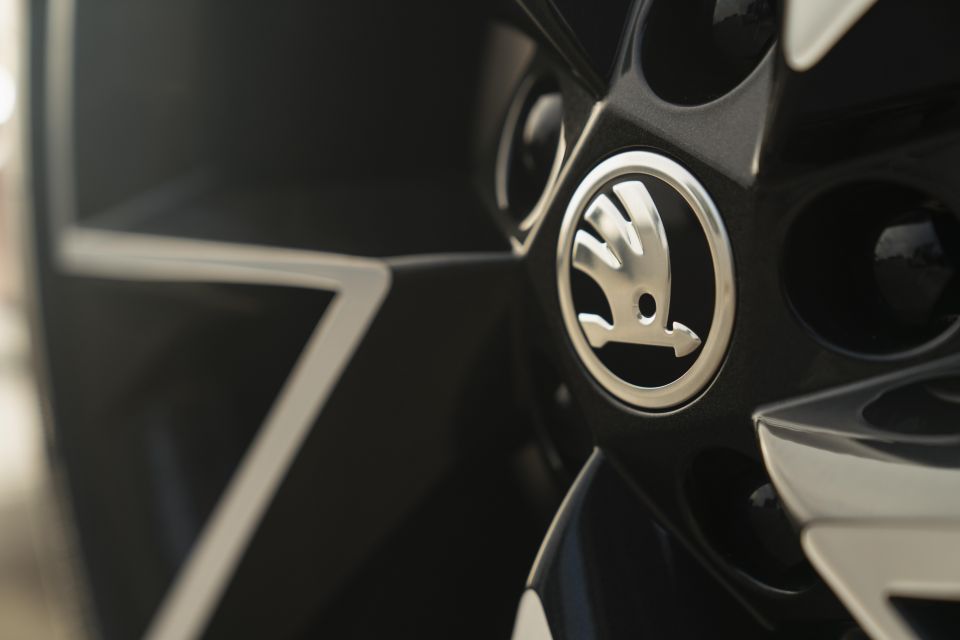
But they also are very important advocates in their communities, and they talk about that. Guess what, they all know 100 people that never have owned a Skoda, never driven one, don’t even know what its country of origin is – let alone have been there before.
It’s a journey, and we continue on this. I think what we currently doing is the right thing for the brand in the market. I have a good feeling about this, and time will tell whether we can go a bit harder to pick up more volume, but I think we will do this in not a sudden kind of change.
Everything is better in evolution, especially when the system is functioning well. Don’t mess with a formula that works, I would say.
Where expert car reviews meet expert car buying – CarExpert gives you trusted advice, personalised service and real savings on your next new car.
Scott Collie is an automotive journalist based in Melbourne, Australia. Scott studied journalism at RMIT University and, after a lifelong obsession with everything automotive, started covering the car industry shortly afterwards. He has a passion for travel, and is an avid Melbourne Demons supporter.


James Wong
3 Days Ago


William Stopford
3 Days Ago


Josh Nevett
2 Days Ago
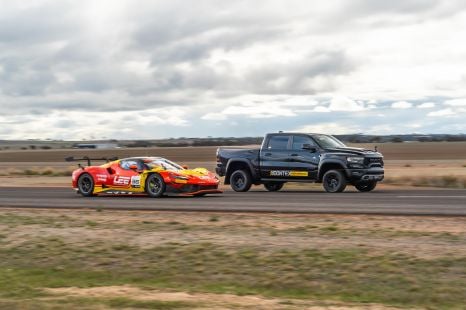

Paul Maric
2 Days Ago


Damion Smy
22 Hours Ago
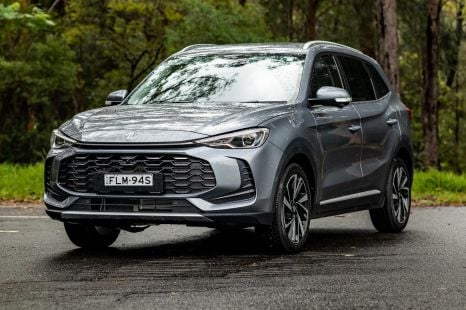

Matt Campbell
15 Hours Ago